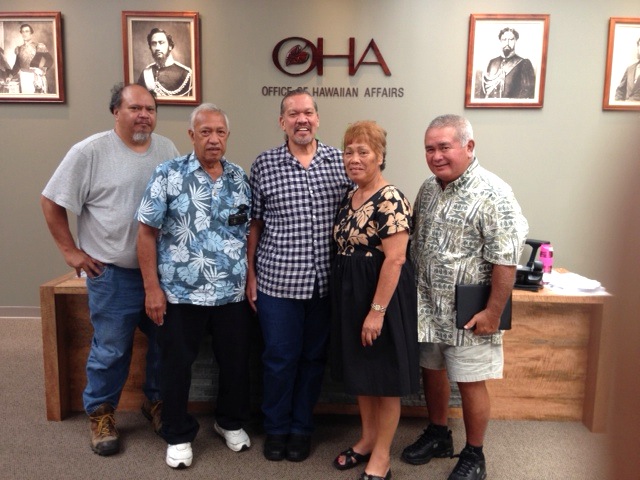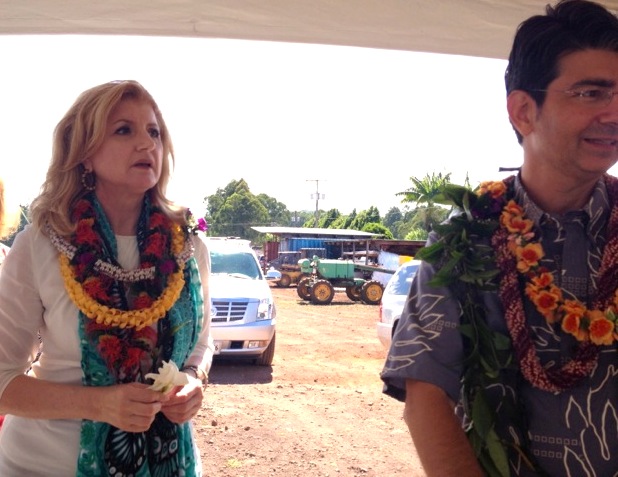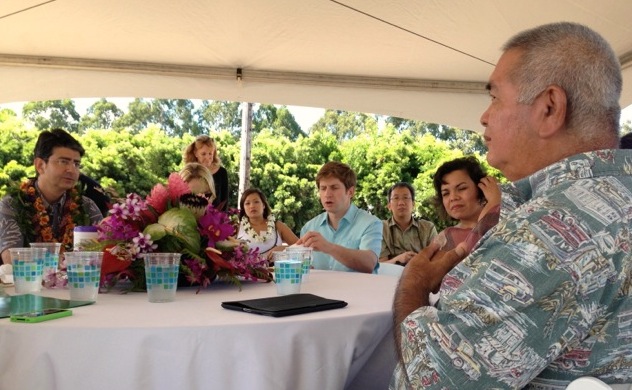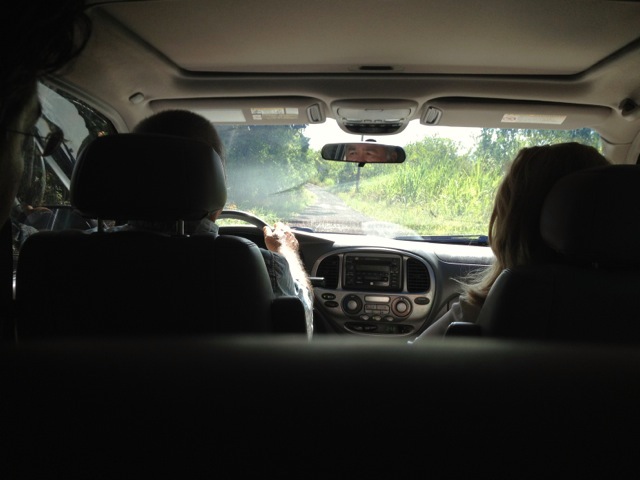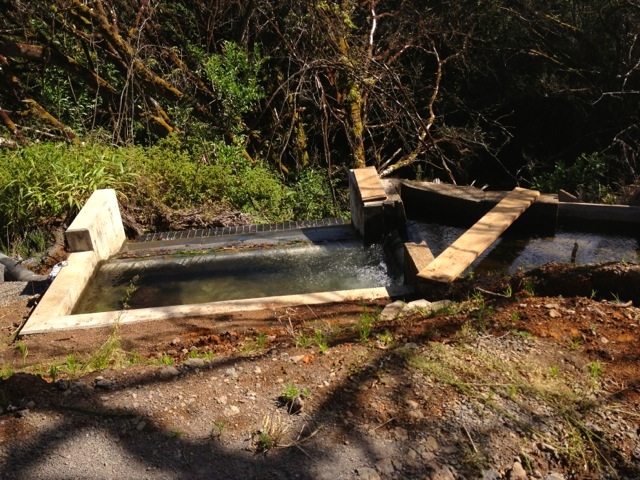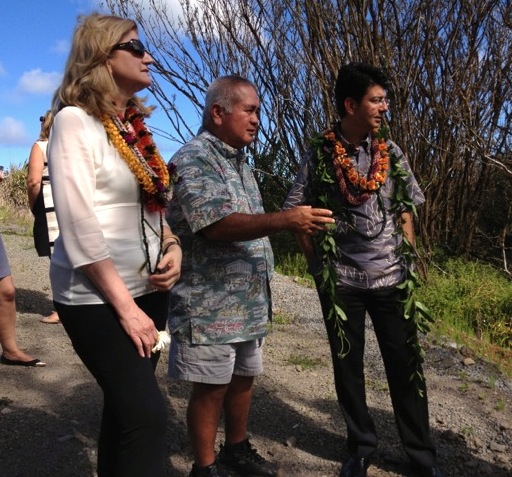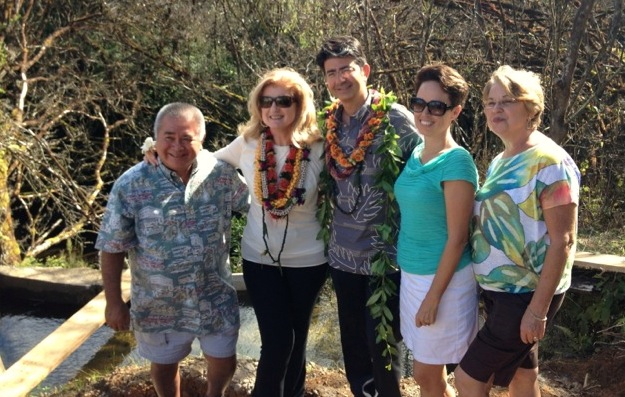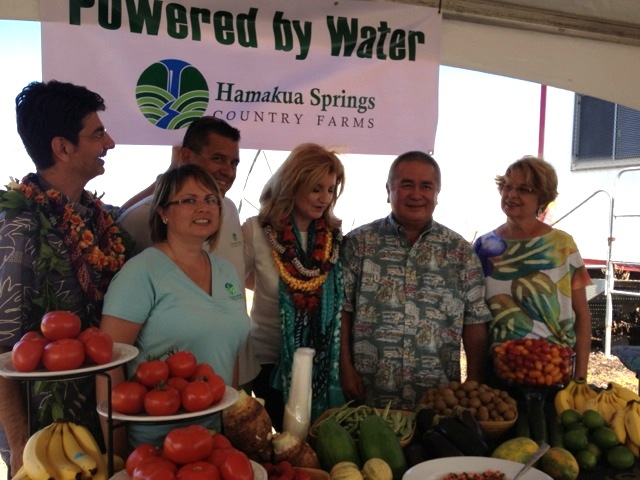Richard Ha writes:
This is terrific.
As we’ve been talking about all this time, the Thirty Meter Telescope (TMT) people are giving a million dollars per year for Science, Technology, Engineering and Math (STEM) education. That’s more than $50 million altogether through the life of the TMT project, and all that money stays on this island for the education of our Big Island keiki.
They’re calling it the THINK fund: The Hawai‘i Island New Knowledge fund.
I wrote a 2010 blog post that explains how TMT President Henry Yang came to understand that keiki education was the lowest common denominator that folks on all sides of the TMT issue could agree upon. That is what led to the THINK fund.
This fund benefits all Big Island keiki, and all Native Hawaiian students will have an additional opportunity for scholarships and grants, as well.
The details:
TMT Launches The Hawaii Island New Knowledge (THINK) Fund
$1 Million Annually to Benefit Hawaii Island Students Pursuing STEM Disciplines
Hilo, Hawaii (November 13, 2014) – The Thirty Meter Telescope (TMT) has launched THINK (The Hawaii Island New Knowledge) Fund to better prepare Hawaii Island students to master STEM (Science, Technology, Engineering and Math) and to become the workforce for higher paying science and technology jobs in Hawaii’s 21st century economy. TMT’s founding gift of $1 million marks the beginning of the construction phase of astronomy’s next-generation telescope on Mauna Kea, Hawaii.
TMT’s THINK Fund initiative benefits Hawaii Island students pursuing STEM endeavors with an annual contribution of $1 million over its existing 19-year Mauna Kea sublease with the University of Hawaii-Hilo. Two Hawaii foundations were selected by TMT, Hawaii Community Foundation and Pauahi Foundation, to administer THINK Fund distribution in scholarship and grant making platforms. The two independent foundations are defining their award criteria and decision-making process.
“During our numerous meetings, TMT and the community discussed how to collaborate to fulfill the shared dream of building the world’s most advanced telescope. The idea for the THINK Fund to invest in the education of students in the STEM field was germinated,” said Henry Yang, Chair of the TMT International Observatory Board. “With the launch of the THINK Fund, we are embarking on two transformational adventures – exploring the frontiers of the universe and providing educational opportunities for Hawaii’s students, both now and for future generations.”
The Thirty Meter Telescope initiated dialogue on the formation of THINK Fund in 2008 by asking a group of community volunteers to outline the mission, vision, purpose and implementation strategy of an education fund benefitting Hawaii Island students. The Organizing Committee that developed TMT’s THINK Fund structure was comprised of Hawaii Island residents.
“After years of THINK Fund planning and reflection, the aspirations of dedicated community members are being realized with TMT’s first annual $1 million contribution, set in motion by the start of our construction phase,” said TMT Community Affairs Manager Sandra Dawson. “As a mother of two teachers, I am so pleased with the THINK Fund’s potential to furnish Hawaii Island students with an easier path to reach for the stars. TMT’s THINK Fund initiative will not only help Hawaii Island students with the tools to excel in STEM areas and the channels to get into college, it can also provide students with the means to get through college.”
The Organizing Committee determined that scholarships, grant making and the establishment of an endowment would ensure the sustainability of improving educational opportunities for Hawaii Island students in STEM disciplines. It further recognized that an emphasis be given to improving opportunities for STEM education for Native Hawaiian students, not as an exclusive preference, but focusing on addressing the needs of Hawaii’s host culture.
TMT’s annual $1 million contribution allocates $750,000 to THINK Fund at the Hawaii Community Foundation and $250,000 to THINK Fund at the Pauahi Foundation. The foundations will administer their respective THINK Funds independently and will have autonomy in administering grant funds, determining scholarship recipients, and the selection and governance of Advisory Committees.
THINK Fund at the Hawaii Community Foundation
Grants are available by application to THINK Fund at Hawaii Community Foundation beginning November 20th and will support a variety of Hawaii Island STEM student activities in and after-school, internship programs and teacher-generated STEM classroom projects. Scholarships will support current and future STEM teachers on Hawaii Island as well as students pursuing STEM degrees and training. Scholarship applications will be available online on December 1st, 2014.
“For the past 98 years, Hawaii Community Foundation has had the privilege of serving our island communities across the state,” said Kelvin Taketa, president and CEO of the Hawaii Community Foundation. “We’re honored to be the stewards of the THINK Fund at HCF that will support STEM education on Hawaii Island for generations to come.”
Advisory Committee members of THINK Fund at the Hawaii Community Foundation are Laurie Ainslie, Roberta Chu, Mary Correa, Kaeo Duarte, Hiapo Perreira, Doug Simons and Barry Taniguchi. The Advisory Committee, facilitated by Hawaii Community Foundation staff, will assist with strategy development, review grant proposals, make grant decisions and encourage STEM education for Hawaii Island.
THINK Fund at the Hawaii Community Foundation is open to all Hawaii Island students including Native Hawaiians, teachers with STEM classroom projects and organizations providing STEM and internship programs that directly benefit Hawaii Island. Learn more and apply at www.hawaiicommunityfoundation.org.
The Hawaii Island office of Hawaii Community Foundation is located in Waimea.
THINK Fund at the Pauahi Foundation
Scholarship Programs will be the initial focus of THINK Fund at the Pauahi Foundation. Grant making is being considered for the future.
“With Hawaii Island having the second largest population of Native Hawaiians in the state of Hawaii, our partnership with TMT provides much-needed financial support for Hawaiian learners from Hawaii Island to pursue educational opportunities in STEM,” said Hawaii Island resident and Pauahi Foundation Executive Director Keawe Liu.
Advisory committee members of THINK Fund at the Pauahi Foundation are Roberta Chu, Kaeo Duarte, Leinaala Enos, David Kaapu, Bob Lindsey, Gail Makuakane-Lundin and Maile Wong.
THINK Fund at the Pauahi Foundation is open to all Hawaii Island students with a preference given to applicants of Hawaiian ancestry to the extent permitted by law. Scholarship applications will be available online on February 4, 2015 at www.pauahi.org.
THINK Fund Collaboration
THINK Fund was designed as an initiative to encourage and attract other funders who align with the mission and goal to improve STEM education and strengthen Hawaii Island’s workforce, and TMT is serving as the founding member of the THINK Fund initiative. The vision of this collaborative approach is to bring together the island community with funders in a partnership that strives to help Hawaii Island students long term.
What’s Next For TMT?
Construction activities in Hawaii include site preparation and grading.
Offsite work has begun in earnest as well. In China, partners are designing the telescope’s fully articulated main science steering mirror system and developing the laser guide star system. Japan has produced over sixty special zero thermal-expansion glass mirror blanks for the main mirror and is designing the telescope structure in detail. Fabricating the mirror support system is ongoing in India. The adaptive optics facility is in final design and the enclosure is ready for construction in Canada. The primary mirror and mirror control system is in final design in California.
The advancement of TMT to this stage of imminent on-site construction has been made possible by the support of the Gordon and Betty Moore Foundation. The foundation has spent $141 million to date to fund the design, development, and construction phases of TMT.
###

